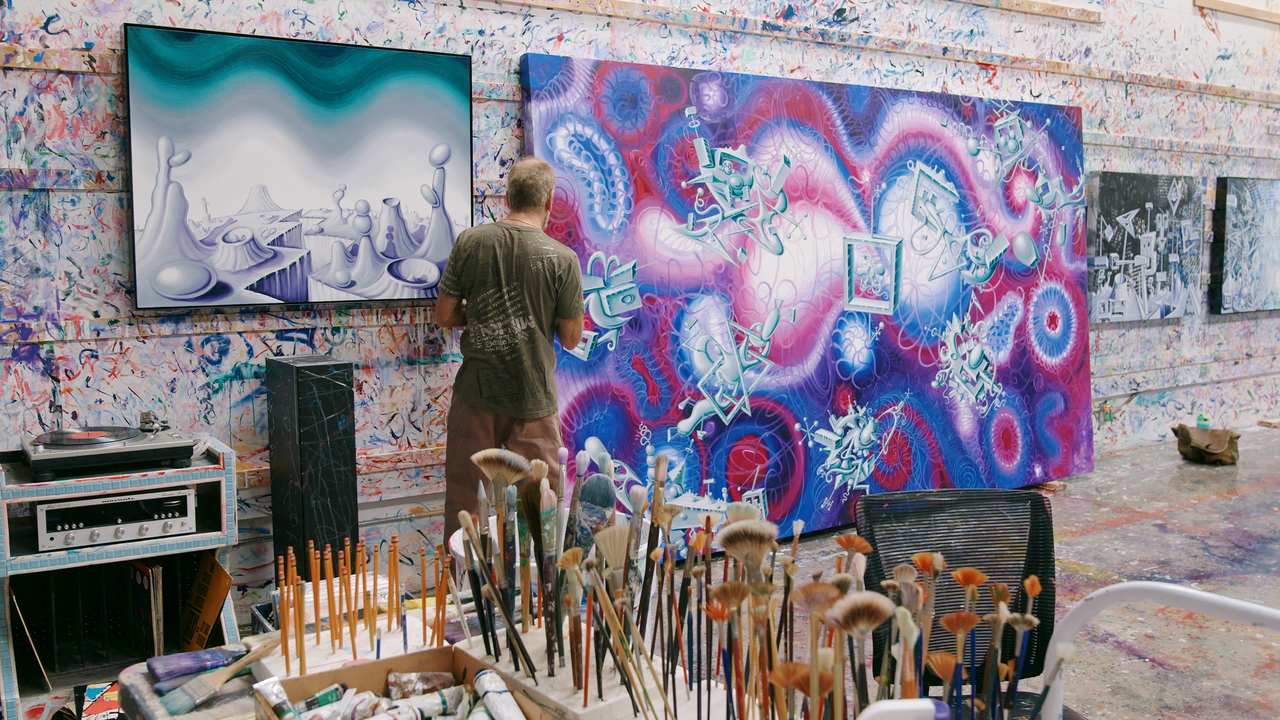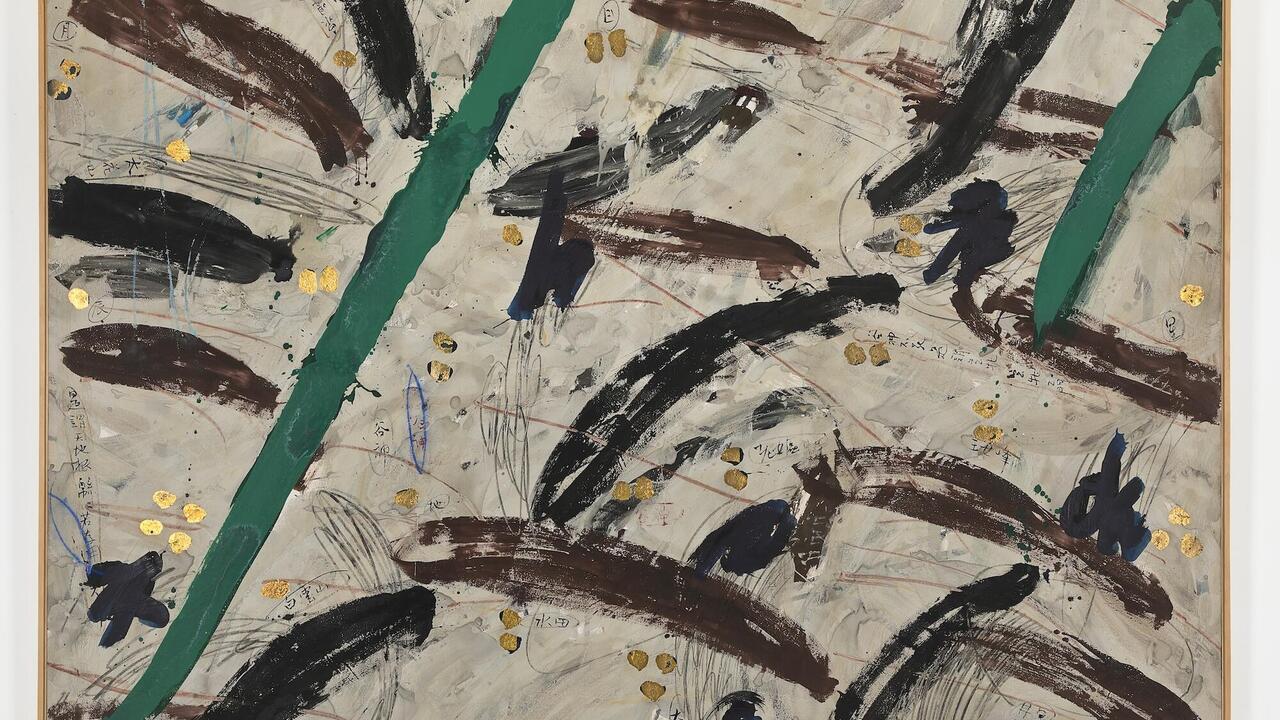Michelangelo Antonioni / Film as Sculpture

Much has been made over the past few decades of the death of film as a material and its probable repercussions on the creation and analysis of the moving image. Two recent film-related exhibitions in Brussels offered some insight into these concerns. At BOZAR, a retrospective dedicated to Michelangelo Antonioni engaged with the visual style and social and psychological forces at play in the oeuvre of one of the most influential filmmakers of the second half of the 20th century, while WIELS presented a group show of recent works that straddle the categories of moving image and sculpture.
‘Michelangelo Antonioni. Il maestro del cinema moderno’, curated by Dominique Païni, the former director of the Cinémathèque in Paris, routed visitors through a series of rooms dedicated to key periods in the Italian director’s career. The show began with what Païni terms the ‘existential trilogy’ of L’Avventura (The Adventure, 1960), La Notte (The Night, 1961) and L’Eclisse (Eclipse, 1962). These three films star Antonioni’s muse, Monica Vitti, whose inscrutable face, hooded eyes and porcelain skin convey the secrecy and charisma of her characters. Antonioni’s career-long engagement with themes of disappearance, absence and invisibility began in earnest with the trilogy, and reached its crescendo with Blow-Up (1966). In each part of the trilogy, something vital disappears: a girl, love, the sun; whereas in Blow-Up, key components of the plot, down to the protagonist himself, seem to disappear. Using film stills, clips, memorabilia and personal effects, the exhibition created a dynamic environment that also allowed space for reflection, something that isn’t possible with the immediate temporality of projected films. The show moved on through rooms dedicated to Deserto Rosso (Red Desert, 1964), Blow-Up, and Antonioni’s sandy 1970s films Zabriskie Point (1970) and The Passenger (1975), both set in atmospheres as dry as touch-paper. Then it digressed into spaces devoted to Antonioni’s early and late films, whose woolliness put into even sharper relief the groundbreaking nature of his 1960s work.
In the early 1960s, Antonioni started painting miniature watercolours, which he called ‘Montagne Incantate’ (Enchanted Mountains). Although he never considered himself a serious painter, he returned to them throughout his career. He would enlarge these tiny works, some barely a few centimetres across, into prints of up to two metres, revealing the arid or misty landscapes and coloured deserts formed by his brush, and extracting latent visual information. This gesture echoes a scene in Blow-Up in which David Hemmings’s character happens upon a dead body in his photograph, a discovery that drives the rest of the film. Antonioni’s ‘Montagne Incantate’ are one facet of a persistent engagement with the relationship between the visible and the invisible – in the photographic apparition of a corpse in Blow-Up, the vanishing of a woman’s serenity in Deserto Rosso or in the essence of photography itself. Païni’s exhibition embodied these philosophical enquiries by first showing the ‘Montagne’ uncaptioned, and later with a full explanation of Antonioni’s painting practice. What at first seemed to be a decorative flourish of the exhibition design eventually emerged as the linchpin of Antonioni’s practical and theoretical work.
At WIELS, ‘Film as Sculpture’, curated by Elena Filipovic, was devoted to the new ways in which contemporary artists address the crossover between film and sculpture. Filipovic includes video in her understanding of ‘film’, yet while celluloid-based works by contemporary artists Rosa Barba, Ulla von Brandenburg and Elad Lassry were, in turn, impressive, delightful and exquisite, the exhibition’s preponderance of obsolete technologies led it down the backward-looking, elegiac path taken by so many recent shows concerned with the legacies and lacunae of Modernism.
Group shows of moving images present particular challenges in terms of respecting the boundaries of individual works, but this show successfully negotiated potential pitfalls by placing pieces together in such a way that one work’s soundtrack enveloped several silent films without disturbing them too much. Many of them incorporated specially built environments: for example, Von Brandenburg’s 16mm film The Objects (2009) was sheltered by her large canvas work Segel (2012). Karthik Pandian’s 35mm slide installation Carousel (2012) got its own space behind an enormous red velvet curtain. Barba’s White Museum (2010), a blank loop of 70mm film, was projected every evening from the fourth floor of the museum onto the crossroads below, illuminating a stage for nothing in particular. The projector itself, a massive anthropomorphic machine, rather than the floodlit square, was the scene-stealer of this work.
Just before disappearing into a cloud of celluloid nostalgia, the show was reinvigorated by two colourful and amusing digital video sculptures by Rachel Harrison, ushering in the world of home video and online mash-ups. In AA (2010), which includes the video American Apparel (2009), footage of performers and audience at a county fair in upstate New York was projected at an angle from a yellow trolley onto a gigantic yellow T-shirt stretched over a wooden box. Reading the heavily skewed video off the brightly coloured T-shirt evoked the surrealism of trips to small-town events. The whole thing was a welcome bathetic poke at the self-conscious grace of the rest of the show.
But none of it quite matched the brilliance with which Antonioni made his images move, the way he analyzed the complexity of our contemporary visual environment, or the sensitivity with which he portrayed his characters’ psychopathologies. The meaning and affect of his films matter more than the fact that they were shot on film, or later on video. By taking popular culture, human nature and philosophy equally seriously, Antonioni’s films became landmarks of modern art. Today, they continue to feel just as contemporary as they ever did.
















